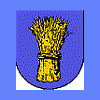-
Posts
25 -
Joined
-
Last visited
The recent visitors block is disabled and is not being shown to other users.

EdO replied to Cuirassier's topic in Translation Assistance

EdO replied to george trotter's topic in General Nihonto Related Discussion

EdO replied to george trotter's topic in General Nihonto Related Discussion

EdO replied to george trotter's topic in General Nihonto Related Discussion

EdO replied to george trotter's topic in General Nihonto Related Discussion

EdO replied to george trotter's topic in General Nihonto Related Discussion

EdO replied to george trotter's topic in General Nihonto Related Discussion

EdO replied to george trotter's topic in General Nihonto Related Discussion

EdO replied to george trotter's topic in General Nihonto Related Discussion

EdO replied to george trotter's topic in General Nihonto Related Discussion

EdO replied to george trotter's topic in General Nihonto Related Discussion

EdO replied to george trotter's topic in General Nihonto Related Discussion

EdO replied to george trotter's topic in General Nihonto Related Discussion

